OBERLY Portable Blender In-depth Review

Overall Verdict
The OBERLY cordless personal blender is not actually a great deal when compared to traditional models. It may win some fans for its take-along design, but otherwise it’s easily forgettable given its lackluster performance. Efficiency is compromised for the sake of style. The low-powered motor and flimsy blades entirely fall short in blending solid foods like raw nuts, dried fruits, and frozen ingredients. Therefore, it doesn’t make sense to believe that this blender is able to crush ice cubes as it’s advertised.
Does this mean that the OBERLY won’t give you anything but empty words? Not really. Pureéing baby food or preparing fresh fruit smoothies will be your OBERLY’s strongest suits. Chopping the ingredients into smaller chunks is necessary for a smooth operation and chunk-free consistency, though.
Things We Like
- Cordless design provides excellent mobility.
- Quite convenient for small batches of baby food and fresh fruit smoothies.
- It’s very easy to charge the battery.
Things We Don’t Like
- The 175-watt motor is too weak to ensure quick, smooth blends.
- In exchange to its cheap price is a relatively flimsy construction.
- For a thorough blending process, it requires cutting the food into tiny particles.
- Some may find it annoying to shake the blender while it is blending.
The OBERLY is a battery-powered personal blender with portable design and intuitive operation. It's pretty easy to identify this model from traditional corded blenders since it looks sportier yet far more compact, being roughly the same size as a thermal insulated water bottle. Considering the small motor body, will this blender deliver you enough power for daily use? We put it through four different real-world tests to find out.
Failed Performance: An Underperformer
In our months of testing, this blender has often underperformed relative to our prediction. It struggled a lot to deliver its promises on efficiency, but there wasn’t even a successful effort in the end. None of the testing results it brought to the table was smooth enough. Some of them even came out very chunky, such as the protein shakes. If you were fortunate enough to own a decent personal blender, you may find the OBERLY less likely an alternative you want. Certainly, this blender is not like what is marketed on paper.
Failed Protein Shake
The OBERLY is something very different, but not in a good way. Typically, personal blenders are designed for at least a serving of beverage. This OBERLY, however, comes a little bit short on capacity. We were very surprised when our ingredients for the protein shake almost spilled out of the blending cup. The issues, however, didn’t just stop there, things got worse still when we started blending.
Most other blenders we tested produced drinkable shakes in around two minutes (for example, the Black+Decker, the KOIOS, or the Ninja Fit). Whereas, the OBERLY couldn’t even have its blade spin since the nuts and dried berries were too solid to churn through. For the most part, they got clogged under the blade. Right after we gave the blender rigorous shakes, it did blend, weakly and in a very short interval. A few more shaking times didn’t help much, either. Finally, we had to admit that our OBERLY couldn’t be up to this test. So we allocated zero points to it.
If you already bought it, fear not: this blender is not a bad choice if your ideal of protein shakes just involves soft ingredients.
Failed Frozen Fruit Smoothie
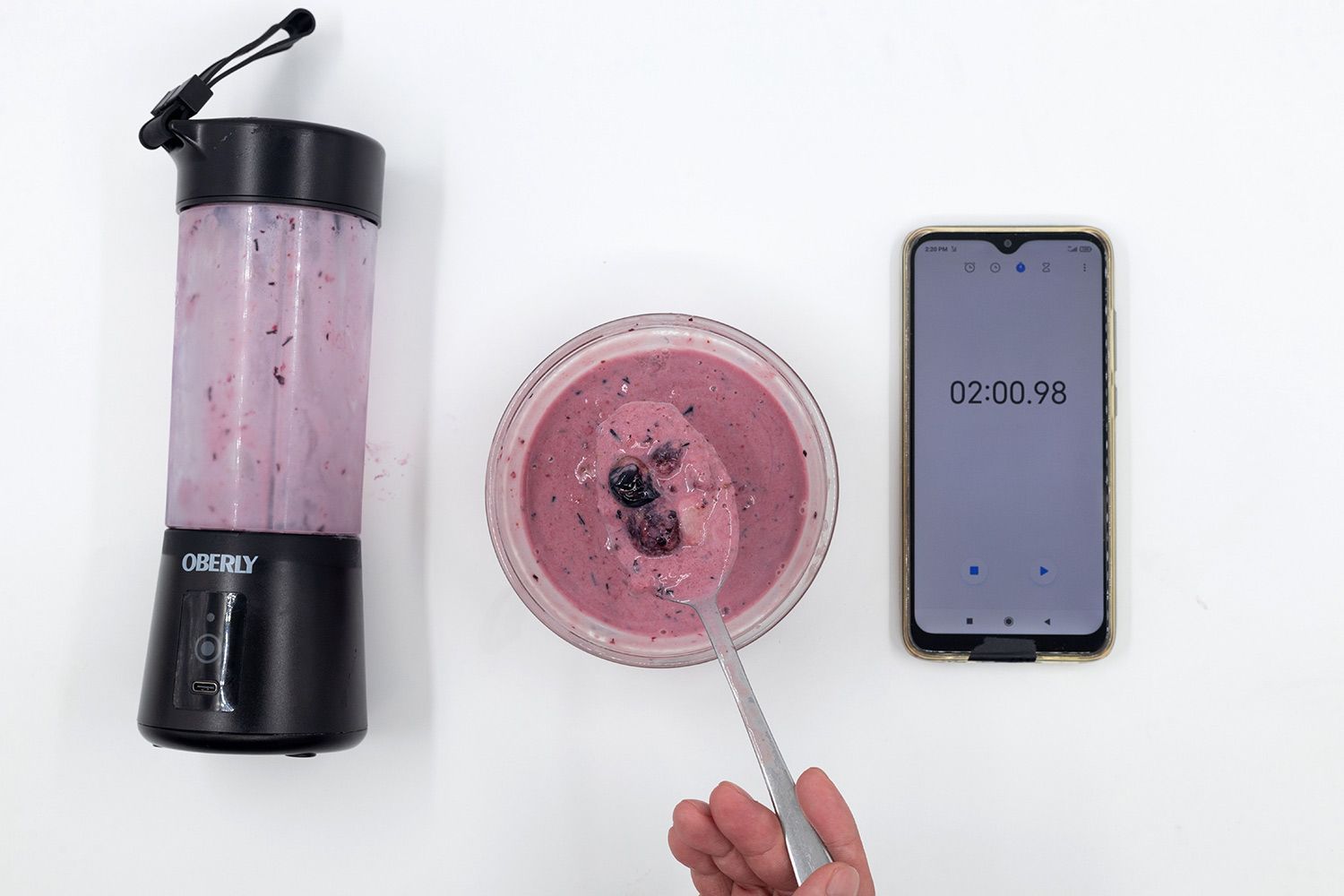


We tested the OBERLY’s smoothie-making capability by blending and combining different types of frozen fruits together, but this seemed to be an overwhelming task for this blender. Everything happening here wasn’t much different from the protein shake test, except for the fact that with our repeated interference, the blender was able to blend on its own, with huge effort and time consumption, again.
Every personal blender in this test has a limited operating time (2 minutes). Because of that, the OBERLY is considered to have failed this test since there were a lot of unblended chunks left behind when it already hit that runtime. Time constraint is necessary since frozen foods thaw quickly at room temperature; if you don’t blend fast enough, the smoothies will come out with a diluted texture rather than an ice-cream-like one.
Nevertheless, if you can live with the compromises on smoothie’s texture and rations, this OBERLY is actually able to process certain frozen ingredients, churning out an icy beverage that may be acceptable enough.
Failed Fibrous Greens
The OBERLY remained an underperformer in this test. It had a hard time liquefying our greens not only because of its weak motor power but also because its blending cup is too small to tackle such an amount of food (2.5 ounces). Most of the veggies didn’t circulate and made the blade stuck even when we undocked the cup and shook it rigorously. As mediocre as this blender was in the earlier tests, this failure wasn’t a surprise anymore, we admitted.
Failed Crushed Ice Cubes
Because of what we’ve been through with our blender, we shouldn’t expect much from it in this test. Gracefully, we did. To be fair, though, using a personal blender like this to crush ice is not a good idea; any heavy-duty task like this can take a toll on your device and impair its performance in more ordinary blends.
If you’re specifically looking for a blender that excels at crushing ice, we recommend the Ninja BN401 or the NutriBullet.
5.9 Design: Lots of Shortcomings
Our Oberly didn’t score big on quality and design. It's difficult to find a more portable design than this blender’s, which provides extreme blending comfort and convenience. Without this great mobility, however, most shoppers may hardly give it a second glance since there is a lack of sturdiness and overall quality here.
In the Box
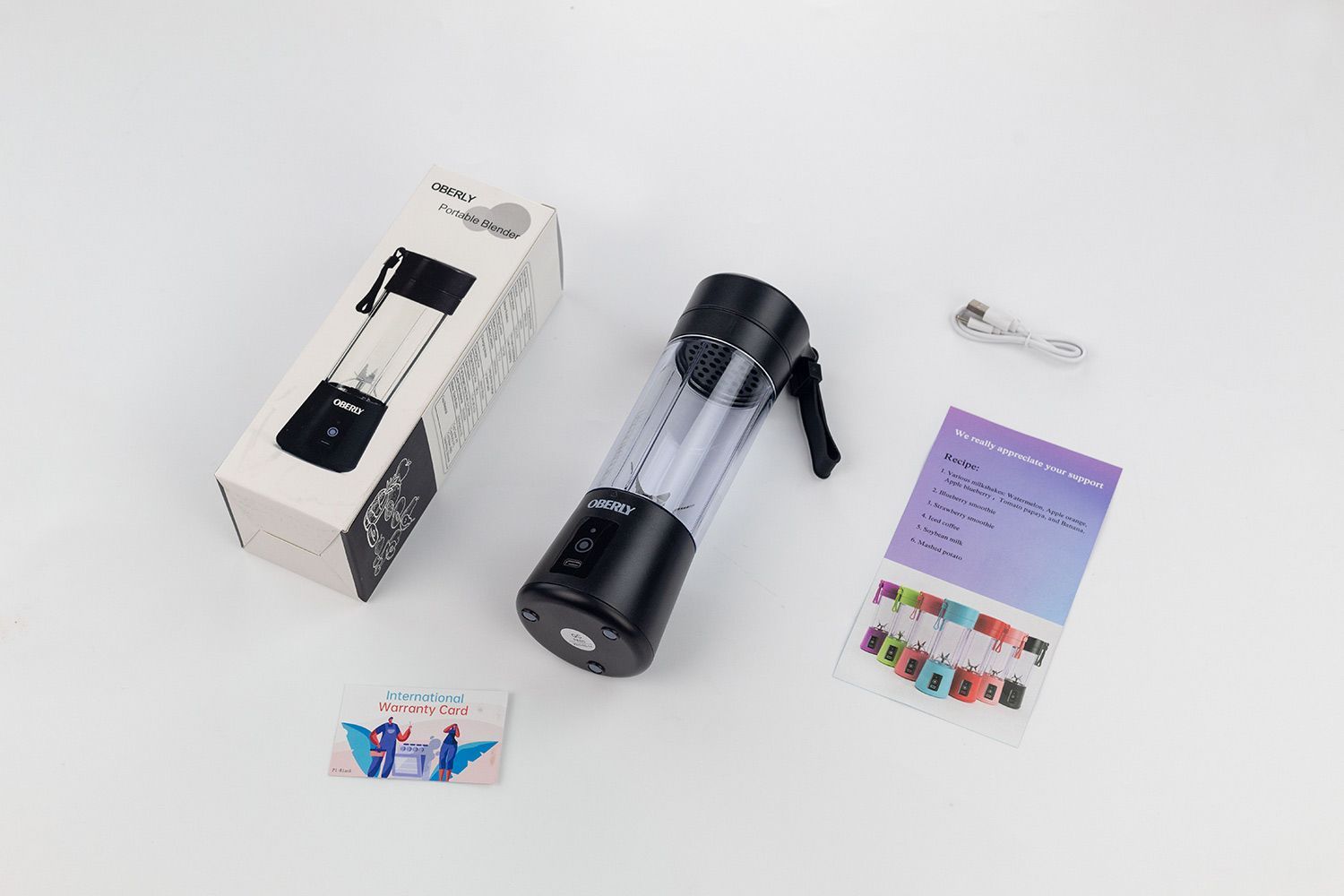
- Motor Base with Blending Blade
- User guide
- Cup Body
- Cup Filter
- Cup Cover
- Warranty Card
Dimensions
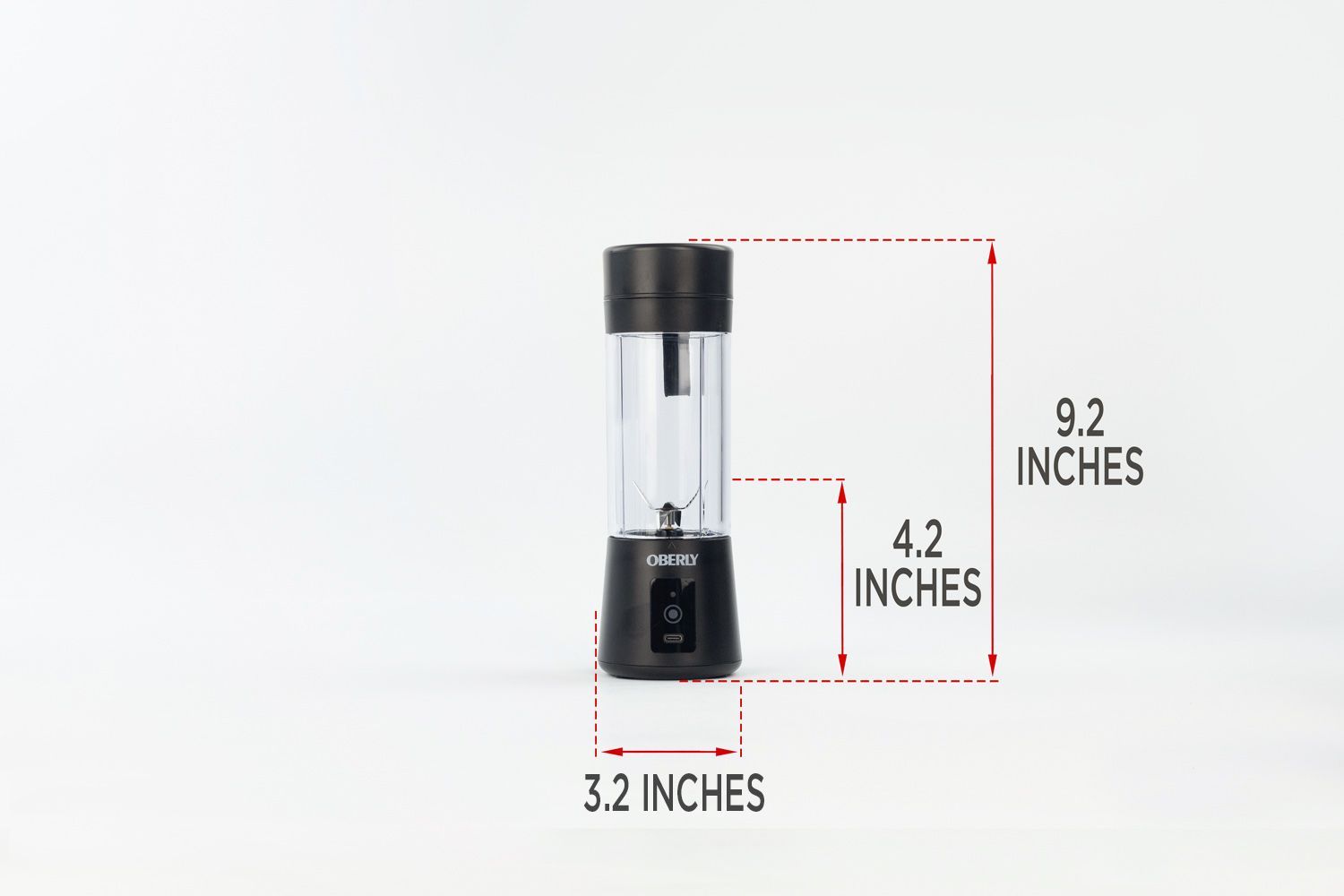
At only 1 pound, the OBERLY is ultra lightweight—about twice as lighter as a standard personal blender. In terms of height, it is about the same size as a thermal insulated water bottle so you can even hold it comfortably with one hand while it is blending.
6.5 Build Quality
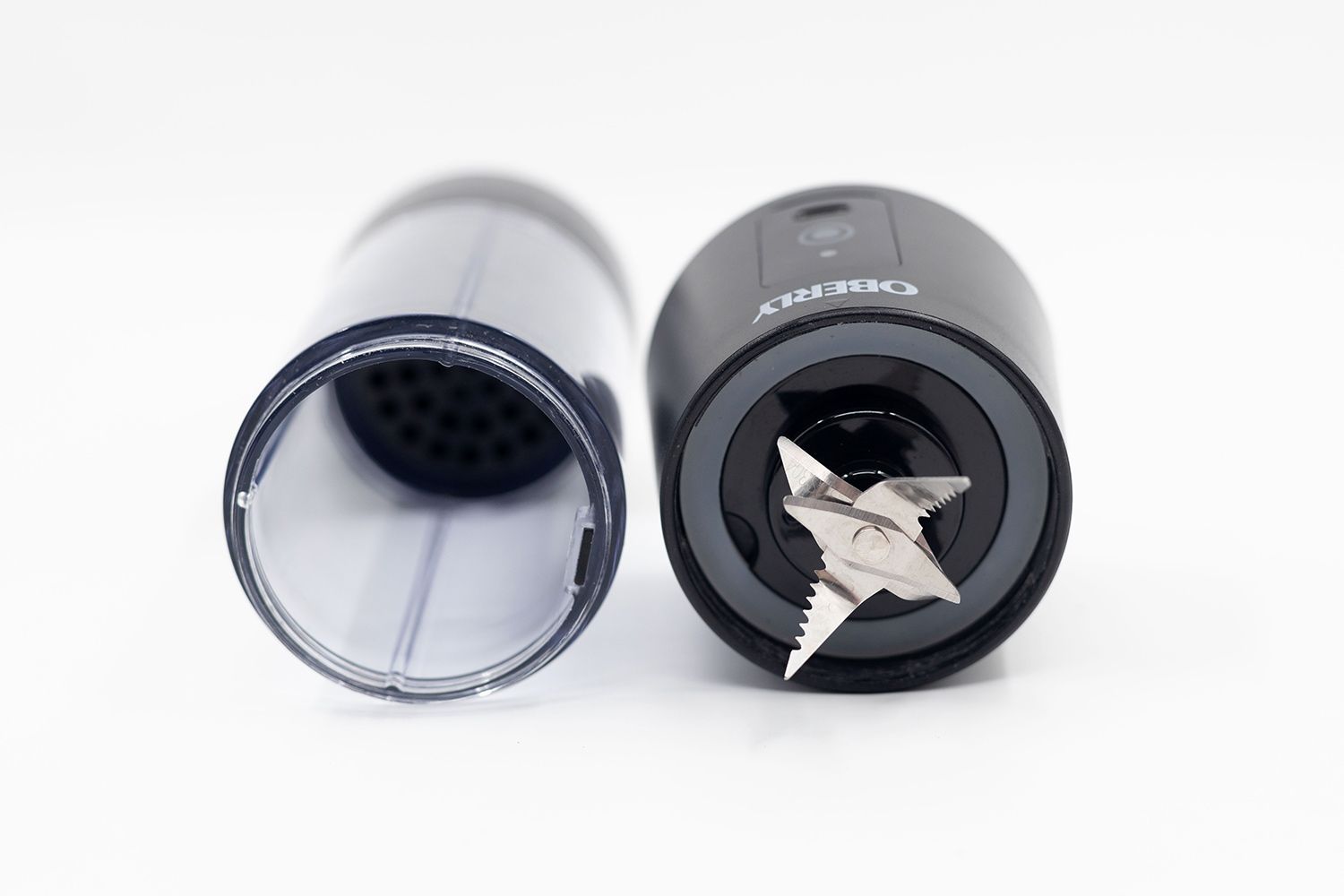
The OBERLY feels a little cheap with low-quality materials. There’re a lot of hard plastic parts that are prone to scratching, from the motor base to the cup body. Even when we avoided using a scouring pad for cleaning, multiple little scratches annoyingly appeared on both the inner and outer surfaces. The blending cup became cloudy with use and the blade assembly, which looks flimsy and more thinning than most, comes substandard, too.
5.0 Blades
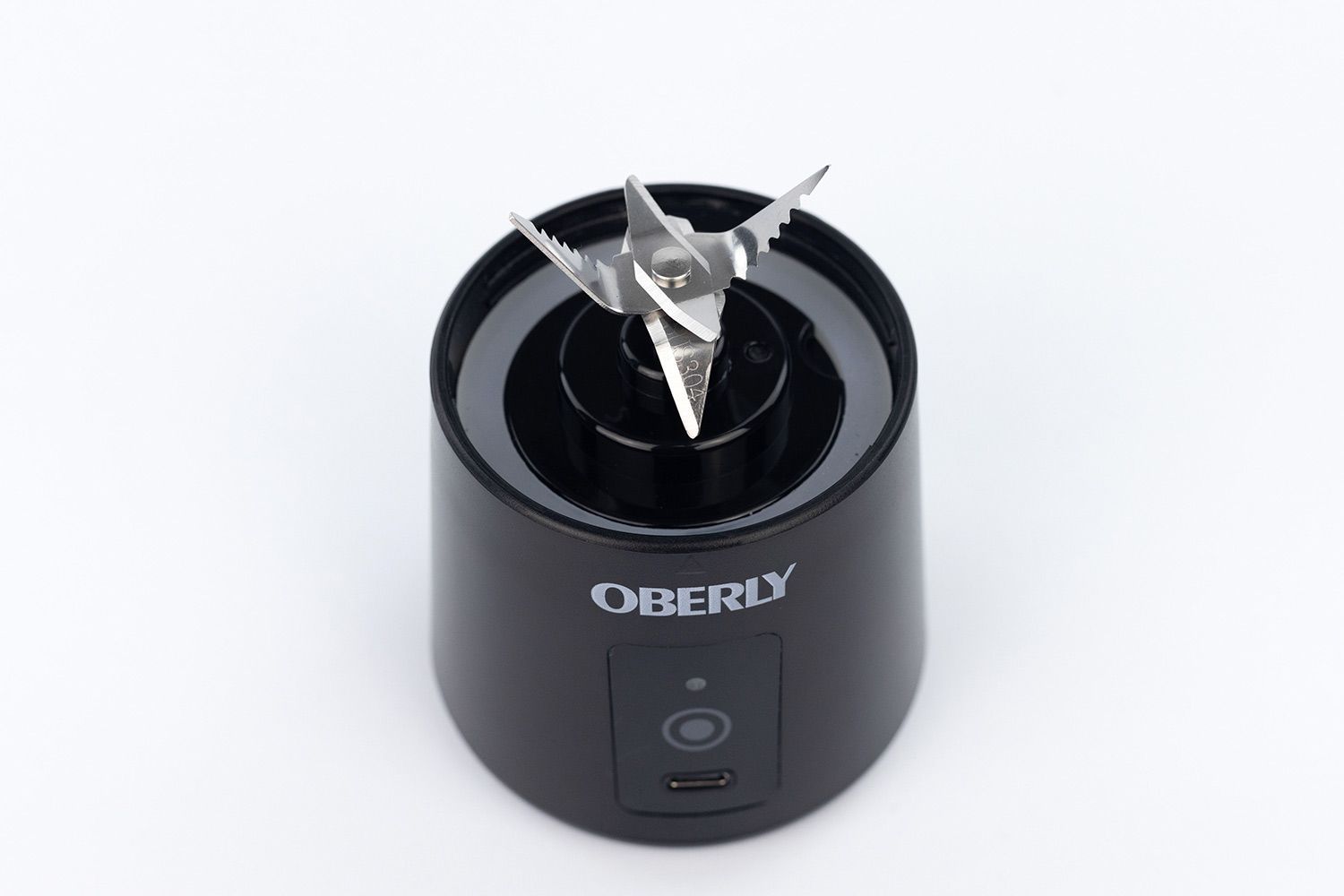
The blade has six prongs: 4 are sharp and the others are serrated. Such a blade’s design is exclusive and showed prominence for heavier-duty tasks if the prongs were thicker, for the least. Unlike conventional personal blenders, the blade assembly is permanently attached to the motor base. This makes it more difficult to clean thoroughly, especially on the blade’s undersides.
Motor Base
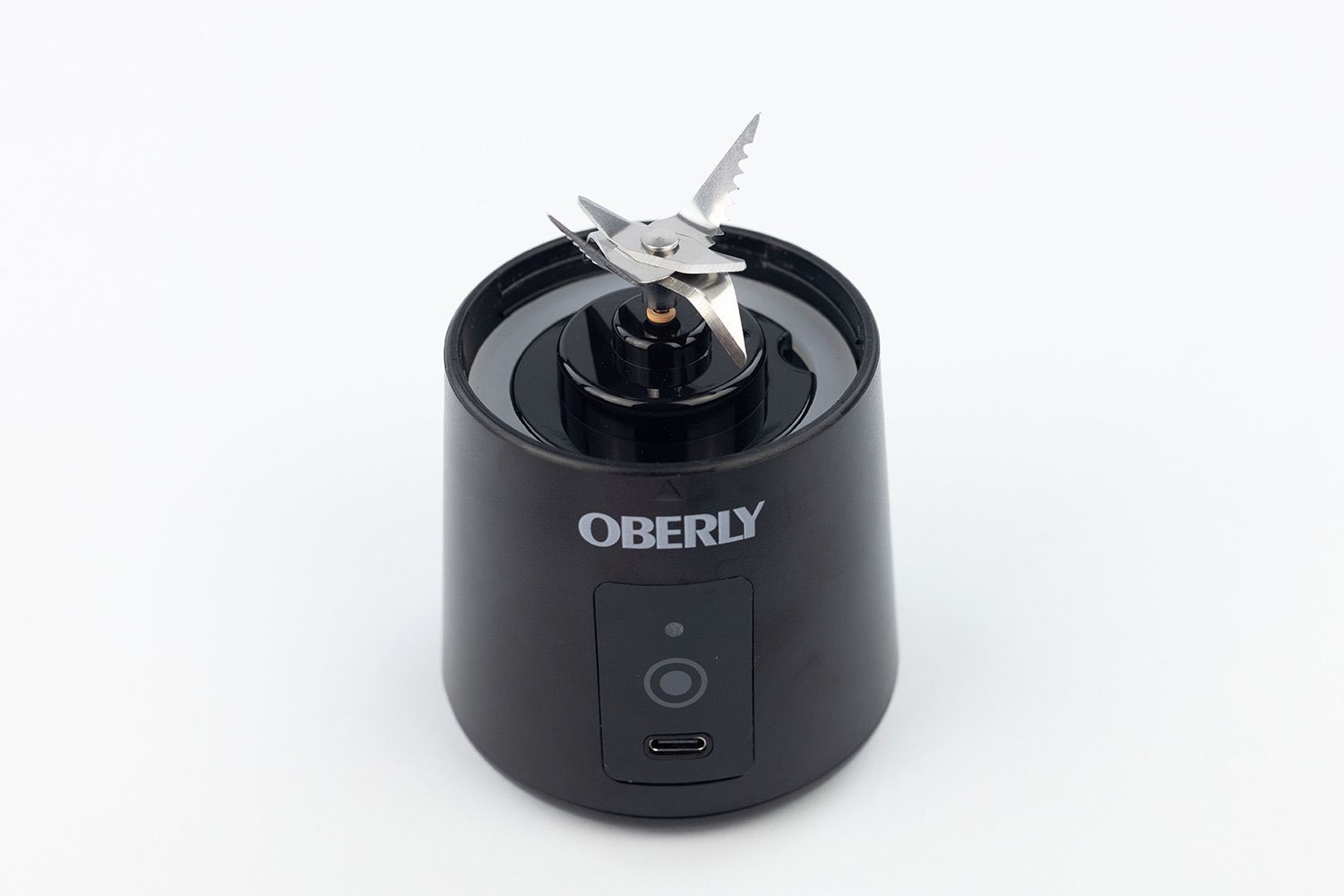
The 175-watt motor is certainly insufficient for solid ingredients. It has an idle blending time of 5 seconds and a maximum continuous runtime of 90 seconds per interval. If the idle time or the single working time runtime is exceeded, the blender will stop automatically, with the blue light switched off. These protection modes are considered necessary since without them your blender would get hot and become overloading, which then results in permanently damaged components.
There are three silicone feet on the bottom meant to provide stability, but we found they didn’t help much in our testing. Our blender walked around on the counter anyway.
5.0 Blending Cup


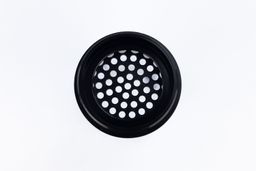
The cup has 380ml (13 ounces) capacity and uses PC (polycarbonate) material. After rigorous testing, it was damaged in some areas, but so far, this hasn’t impaired the blender’s performance. The lid and filter are both made of PP (polypropylene). They’re designed to seal the cup nicely so we didn’t experience any leaking even when we shake the cup vigorously or turn it upside down.
Note that when the blender is working, it is imperative to open the lid or put anything into the cup for optimal safety. Your machine will stop working when its cup is separated. However, since the cup is a hollow piece with dual openings, remember not to remove the cup from the motor base when liquid is still inside.
Speed and Controls
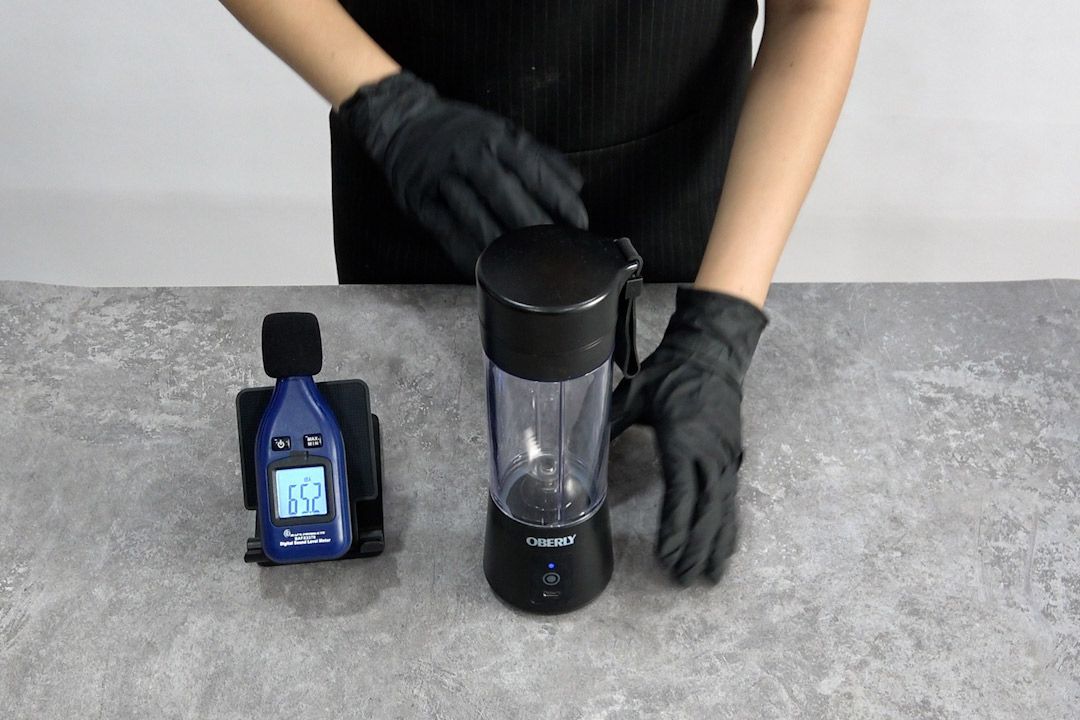
The OBERLY allows you to get its single-speed through a touch button, which demands just slight pressure to activate. It doesn’t feature a particular setting for the pulse function, but you can simulate this mode by pressing and releasing the button in short intervals.
4.9 Usability
We like the straightforward approach of a control panel that consists of a single button, a light indicator, and a . That being said, it doesn’t make the blender more enjoyable to use or easy to maneuver. Due to the weak motor, our OBERLY cannot draw the ingredients toward its blade on its own. To produce a smooth blend, It requires lots of manual interference for shaking and food dislodging. Cleaning and assembling can be bothersome in some cases, too.
3.0 Hands-Free Operation
To blend, you only need to hit the power button rather than pressing and continuously holding it during the operation like you have to do with most traditional personal blenders. Despite this, we couldn’t get the full advantage of the hands-free operation feature since there was barely a time we could stop shaking the blending cup. Otherwise, clogged food would prevent the blade from turning.
7.5 Assembly
Attaching the lid, the filter, and the cup together is a breeze. We recommend screwing the filter onto the top of the blending cup first, then tightening the lid afterward.
To finish the assembly process, just fasten the open end of the blending cup to the motor body so that the arrow on the cup is lined up with the arrow on the base. This takes some getting used to, but will be easier to do after practice. In case the jar isn’t aligned with the base properly, your blender won’t run while the red and blue light flash alternatively.
Parents with young kids will appreciate this locking function of the OBERLY. After several uses, however, it no longer works efficiently. Sometimes, we didn’t align the arrow on the cup to match the arrow on the base, but our blender was still able to blend.
Separating all the pieces is easier. Simply do the reverse of the assembly process.
8.0 Cleanability
The lid, filter, and blending cup are top-rack dishwasher safe. It’s advised to wash them by hand with warm, soapy water,though, so they don’t degrade as quickly. The motor body shouldn’t be immersed in water so we cleaned its exterior surface with a soft cloth and then scrubbed away food tailing in the blade assembly with a bottle-cleaning brush. So far, we haven’t have any trouble in doing this, but for those with large hands, cleaning the blade’s undersides may become a little bit trickier, especially when there isn’t a brush available.